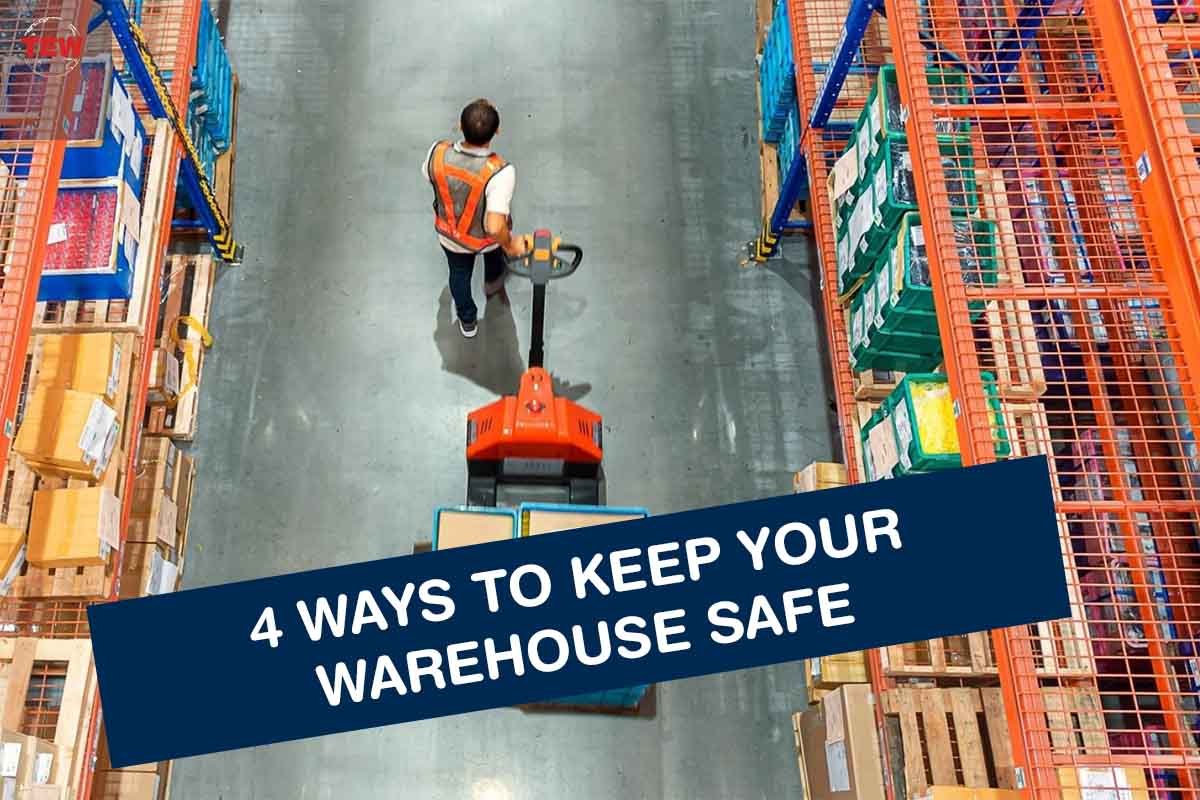As important as warehouses are to the success of your business, they pose serious safety risks if they’re not managed properly. Therefore to keep your warehouse safe is very important. Maintaining a safe working environment for your warehouse employees requires regular assessment and appraisal. Your success depends on having a warehouse that’s efficiently managed, both from a safety and productivity standpoint.
Safety managers and shift supervisors who care about their employees’ well-being are always on the lookout for better, more cost-effective solutions to ensure their workplace is a safe place for everyone.
Following these four tips can help keep your warehouse safe and workers healthy and productive.
1. Use Safety Signs
While it’s undeniable that signs are crucial on the warehouse floor and everywhere in every facility, many businesses fail to require signs, update or use them often or strategically. Huge issues may arise because of this, affecting productivity and profits. Warehouse safety is also seriously compromised.
The use of warning labels and signs can raise awareness in potentially dangerous areas, decreasing the likelihood of accidents and injuries. Workers and customers alike may be put in harm’s way by machinery and dangers in a warehouse. If so, label it properly and post warning signs wherever it is kept.
Here are a few examples of safety signs:
- Danger Signs bring people’s attention to and give warning about potentially deadly situations or materials. They consist of a white rectangle with a black rectangle superimposed on top, like a white frame around a pictogram. The word ‘Danger’ appears in white letters within a red ellipse within the black rectangle.
- Warning Signs should be followed so that no one gets hurt. These are easy to distinguish with their yellow backdrop and black triangle surrounding the warning symbol. One of the most widely recognized Danger Signs is ‘SLIPPERY WHEN WET.’
You can change the wording of warning signs to fit your needs. Here are a few scenarios where a warning sign may be appropriate:
- Restricted Areas (Forklift Operating Area);
- No Entry;
- Fire Safety;
- Social Distancing;
- Foot Protection Must Be Worn; and the like.
Warning signs play a crucial role in preventing accidents on the job. So, if you need a custom safety sign made to meet a unique demand in your warehouse, it’s important to work with a safety sign expert to ensure compliance.
2. Assess The Condition Of The Storage Facility
Take a look around the warehouse and take some notes of its current condition. To maintain a safe and productive warehouse, ask yourself the following questions:
- Is there anything that’s been damaged or showing indications of deterioration that could endanger people and needs fixing right away?
- Is there anything wrong with or in need of repair with your safety gear?
- Is there broken machinery that could put your workers in danger?
- Do you have sufficient space for your employees to move around?
It’s recommended that you conduct regular checks of the warehouse’s physical structure. The layout of a warehouse is a major factor in worker protection. You can spot potential safety problems in your warehouse by evaluating its layout.

Make sure there are designated areas of the warehouse where workers can work without fear of being interrupted. Congestion and personnel overload can be avoided with some forward planning. This will also increase the precision of your orders by reducing the likelihood of error.
Don’t forget to inspect the state of the most used doors, windows, floors, and ceilings. This will help you to fix problems as soon as possible, protecting your employees and goods from damage.
3. Make Sure The Warehouse Floor Is Kept Clean
As obvious as it may sound, cleanliness is actually one of the most crucial safety rules. Designate floor personnel on each shift to do frequent cleanings, such as removing boxes and other forms of floor debris. Meanwhile, if you work with chemicals or store liquids, make sure you have a spill kit available and that it is easy to obtain.
When it comes to preventing accidents on the job in a warehouse, the most prevalent cause is a slip and fall. So, empty the garbage cans, do regular inspections, and give shift managers the authority they need to keep things tidy.
4. Require Employees To Wear PPE
Working in a warehouse involves risk. Employees are significantly more at risk without personal protective equipment (PPE), for example, from falling objects, splashes of dangerous chemicals, foreign particles in the eyes, and extended exposure to noise. When working with dangerous chemicals or substances, your employees should be wearing protective suits or hazmat suits so that they aren’t exposing their skin to those chemicals.
Make safety gear the first thing your employees grab for when they’re in a situation that calls for the use of equipment like hydraulic machinery or forklifts. Encourage everyone to adopt a culture of safety by making it mandatory to wear protective gear including hardhats, gloves, ear plugs, overalls, safety boots, and glasses while dealing with pallets and others.

Conclusion
An all-encompassing warehouse safety plan that applies to all workers and building a culture of safety in the warehouse are the first steps toward establishing a risk-free workplace. Managers of all levels, but notably executives and owners, should work to create this culture. To ensure a safe workplace, owners and managers should allocate resources (both time and money) to this priority.




